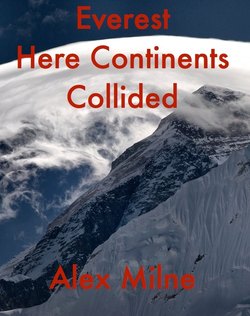Читать книгу Everest Here Continents Collided - Alex W Milne - Страница 9
На сайте Литреса книга снята с продажи.
ОглавлениеChapter 2
Mountain Building
Here Continents Collided
The Himalaya is a “must see”, lifetime experience. I first visited the Himalaya in 1980 as a newly graduated geologist. I had an ambition to see the highest mountains in the world. My first view was of Manasulu on the Jiri to Manang trek. It is a view that is still etched in my mind. Manasulu looked glorious as it glowed in the setting sun.
The Himalaya has evolved from a continent to continent collision that has long fascinated geologists. The trek into Everest takes you directly into the collision zone. What does the “roof of the world" comprise and how was it made? These questions have challenged and continue to challenge successive generations of geologists.
British geologists were involved in the first attempts to climb Everest and at the same time they gathered rock samples high on the mountain for analysis. This along with field observation began to unravel the evolution of Everest. The most notable in mountaineering terms of the early geologists were Noel Odell and Lawrence Wager, both of whom subsequently followed academic careers. Odell at Cambridge and Wager at Oxford. It is my lasting regret that I never had the opportunity to meet Odell who was regular attendee at the Alpine Club, even into his advanced years. It was a great privilege to attend club meetings with Lord and Lady Hunt, George Band, Mike Ward and Mike Westmacott. As a younger generation of mountaineers we were, and still are, in awe of the “Golden Generation”.
Everest from Gokyo Ri. Showing location of geological samples recovered by mountaineers and geologists.
A= Tethyan limestone B= Yellow Band marble C= Everest Series Qomolangma Detachment.
